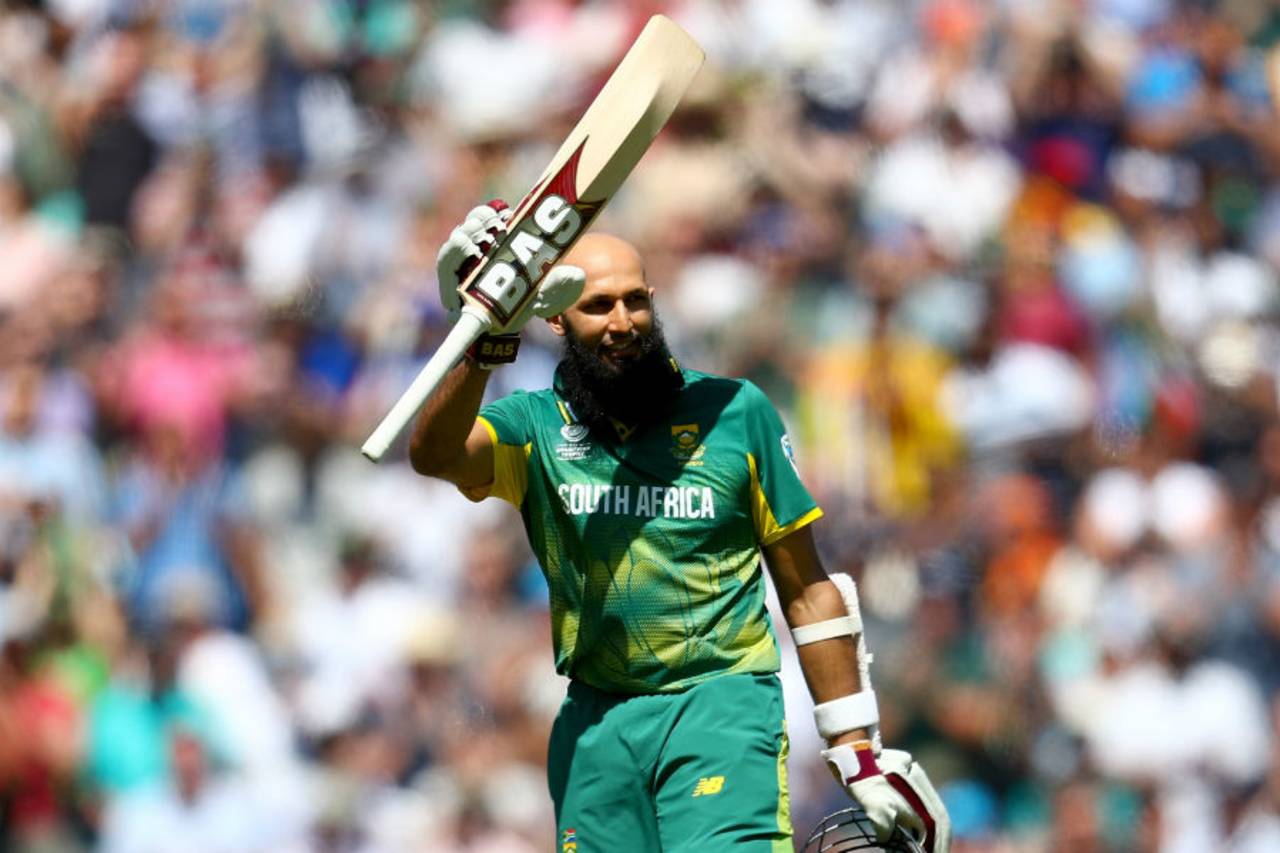When
Hashim Amla became the holder of the highest Test score by a South African, after his unbeaten 311
at The Oval in 2012, he was already the world's top-ranked ODI batsman but barely lauded as such. He was known as a long-form master and his triple-century, as well as another hundred in the series against England, confirmed that - though it only elevated him to No. 2 in the Test rankings. In the afterglow, he was asked what it felt like to be the best batsman in the world.
"I don't know, I'm not even the best batsman in my team," he replied.
It was a typically Amla-esque answer, draped in modesty, but it also hinted at a home truth. Playing in the same team as AB de Villiers has its drawbacks, even more so in limited-overs cricket.
De Villiers had been hailed as the best batsman of his generation, an era which straddles Tendulkar-Ponting-Kallis as well as Kohli-Williamson-Smith-Root. Amla has played in the same period but, although he occupied the top spot for a substantial time, he is seldom mentioned among the modern greats across all formats. His hundred in South Africa's Champions Trophy opener should change that.
It is not just that it was a(nother) impeccably timed bit of batting from Amla, whose first 27 balls yielded only 13 runs before the next 59 resulted in 71, or that he was the anchor of the 145-run second-wicket stand with Faf du Plessis that South Africa's innings was built on, or even that he contrasted wrists flicks with meaty blows like the two sixes he smashed into the crowd. It was what this innings says about Amla's place in the 50-over game.
This century was his 25th and it took him 151 innings to get there, faster than anyone else. He is also the fastest to 2000, 3000, 4000, 5000, 6000 and 7000 ODI runs - proof that Amla, with his classical style and calm demeanour, is actually a more aggressive run-scorer than his contemporaries. Add in his effectiveness - only two of Amla's 25 hundreds have been
scored in defeat - and Amla's role in South Africa's success cannot be doubted.
So why does the spotlight seem to scan past Amla and shine more brightly on de Villiers and, more recently, Quinton de Kock and du Plessis? The answer is two-fold. De Villiers and de Kock are showstoppers, whose range of strokes are more emphatic than Amla's. While de Villiers now has a reputation that means even when he plays a pull too early and gifts a catch, as he did today, he will still steal headlines, de Kock has been South Africa's
most successful run-scorer since the 2015 World Cup and his precocious talent will result in him being recognised for many a year to come.
Du Plessis has dominated talk less for his cricket and more for the off-field issues of the last 18 months. In that time, Amla stepped away from the Test captaincy to make way for a de Villiers-du Plessis debate, in which du Plessis eventually prevailed. The topical issues in South African cricket shifted from Amla's reluctance to lead, to de Villiers' reluctance to play Test cricket and desperation to win a World Cup, to du Plessis' desire to captain, which allowed Amla to slip into the shadows, just as he likes it.
For a while, Amla's form followed suit - which did not aid his claim to a place among the 'big four' batsman in the world. Amla went nine Test innings without a hundred, which included South Africa's victory in Australia, and then had a quiet ODI series in New Zealand, where he did not score fifty once. His lull coincided with purple patches for Steven Smith, Kane Williamson, Virat Kohli and Joe Root, meaning that even Amla's two IPL hundreds only briefly resurrected the conversation about his all-format ability. They also hinted at a return to the rhythm that South Africa are now benefitting from.
Ama has come on this England tour on the back of an IPL where he finished sixth on the run charts, with 420 runs at 60.00, and was allowed to adopt a more carefree approach to a game that can sometimes become so serious that batsmen lose their spontaneity. He joined the South Africa squad with what seems a renewed focus, knowing that, like many of the seniors, the time to win a major tournament is likely limited to the next two years. Though Amla has never said it in the same way de Villiers has, he also aims to be part of an ICC-event success story, and he showed it here.
He took on the responsibility South Africa needed against a Sri Lanka attack that was not entirely threatening but bookended the innings with fairly tight spells. Amla used the mid-section to press home South Africa's advantage. He upped the tempo, he punished the bad balls, he set it up for a burst at the end and though he seemed more annoyed than usual when was run-out, he put his team in a winning position. That's what a great does. There is no reason that Amla should not be counted among them.
Firdose Moonda is ESPNcricinfo's South Africa correspondent
